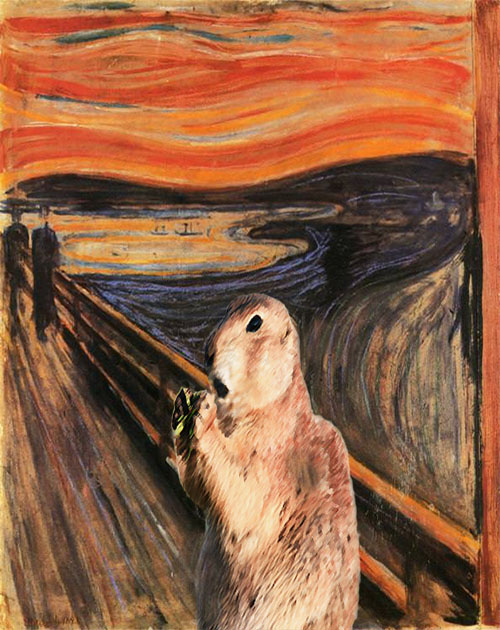Sylvan Lake on SD Hwy. 87 was shrouded in fog when we arrived there one morning on the way to Mount Rushmore. The mist clinging to the granite formations surrounding the lake was gone within a few minutes of our arrival.
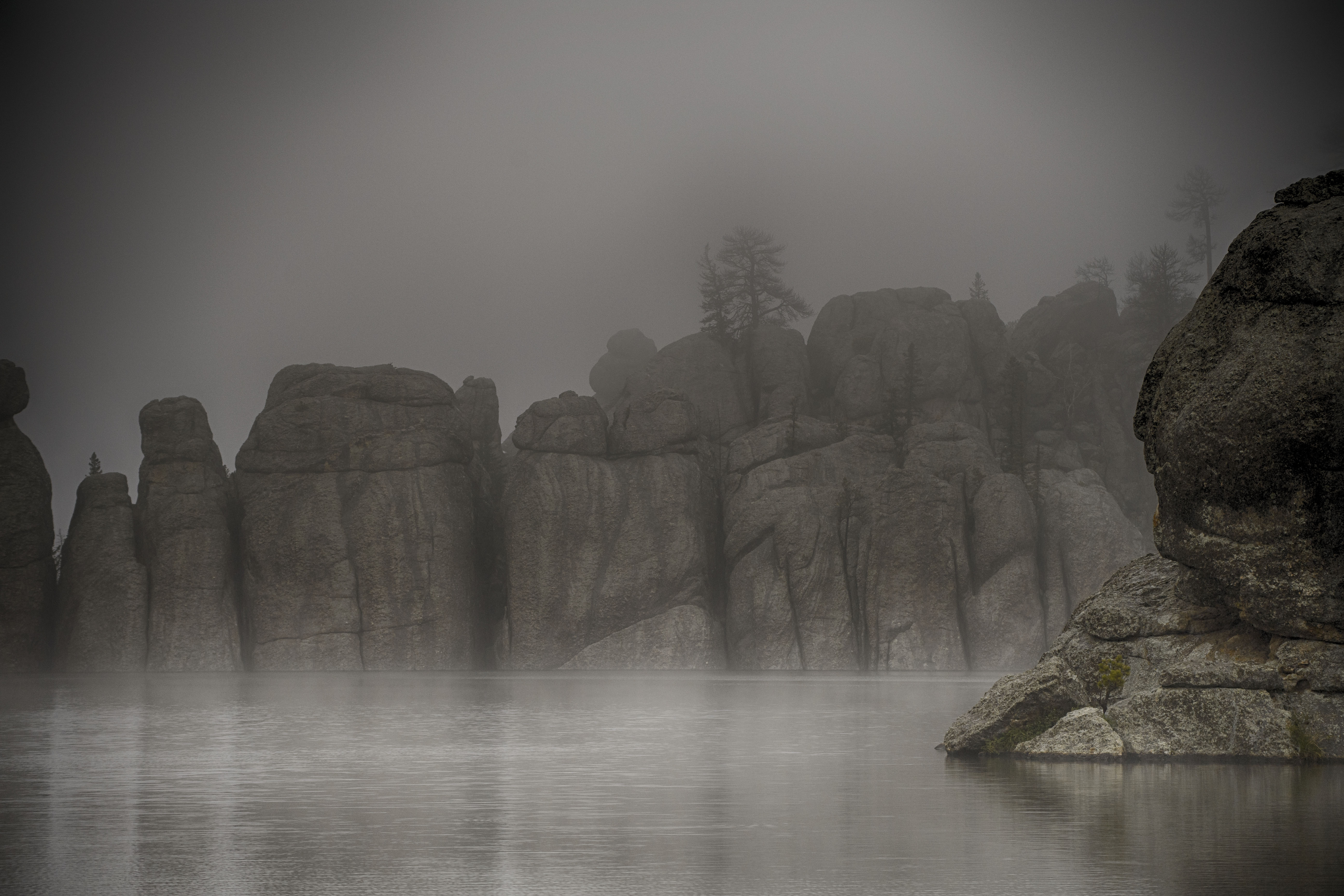
Sylvan Lake on SD Hwy. 87 was shrouded in fog when we arrived there one morning on the way to Mount Rushmore. The mist clinging to the granite formations surrounding the lake was gone within a few minutes of our arrival.

One rainy day in South Dakota, on the way to see Mount Rushmore, we stopped at a way station with a small scenic lake that was especially mysterious in the fog. Three birch trees were growing along the path against a solid rock ledge. Although I took photographs because I liked the shapes of the trunks, I knew the background was not especially pleasing because the rocks prevented any visual depth. But, I had in mind something I learned in a presentation by one the very talented and innovate members of my camera club, Jerry Berry, who often creates abstracts from his photographs. These tree trunks are my first attempt at one of his Photoshop suggestions. I created a background motion blur from a duplicate layer of the tree trunks and created some depth by shifting the background, then selected the trunks individually and moved them to the top layer. It’s sort of unfinished as my original plan was to add some butterflies flitting among the tree trunks but couldn’t execute that to my satisfaction so I decided to go with just the trunks for now.
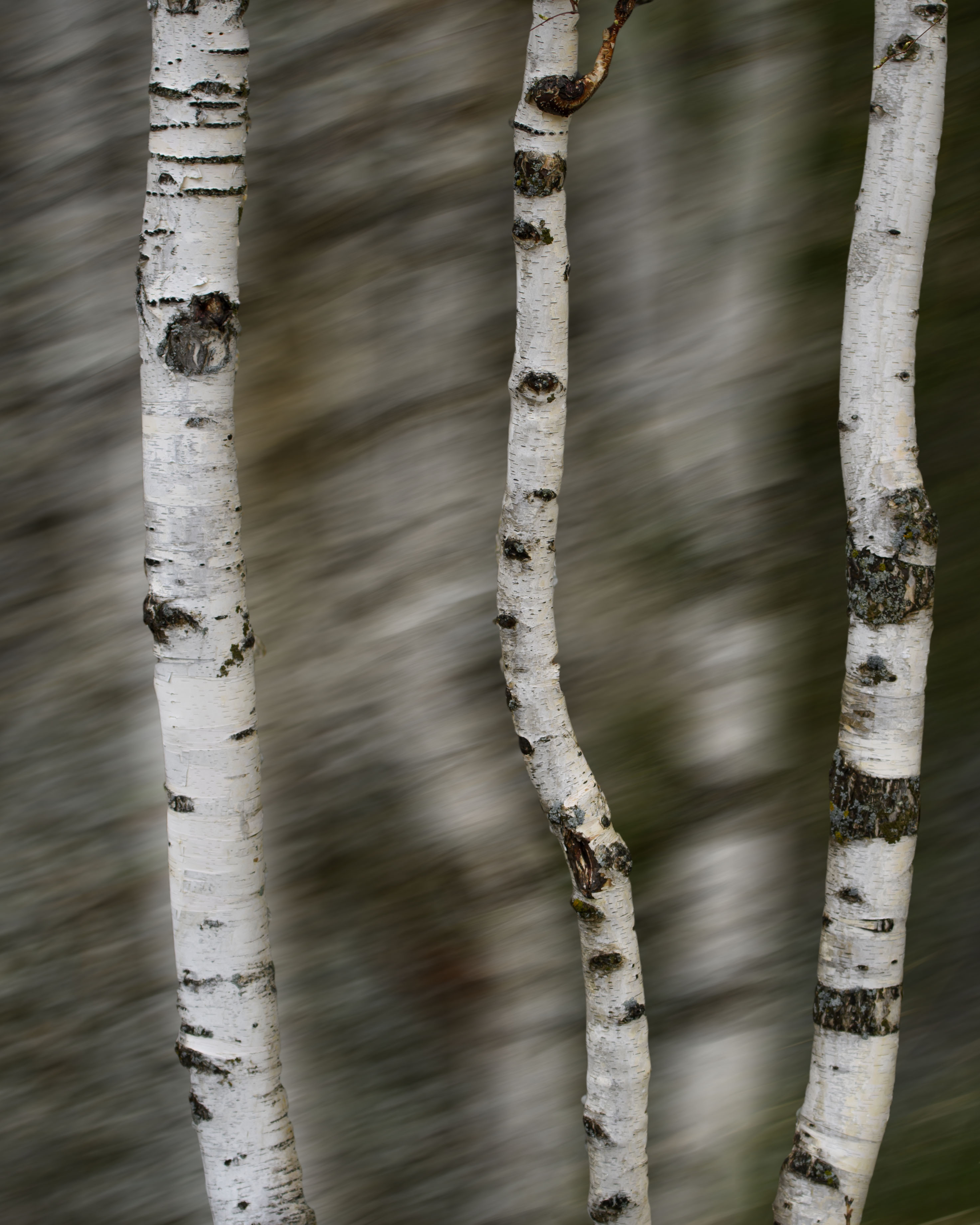
The bushtits arrived en masse to bathe Saturday morning. There were at least ten tiny birds but these were my favorite shots.
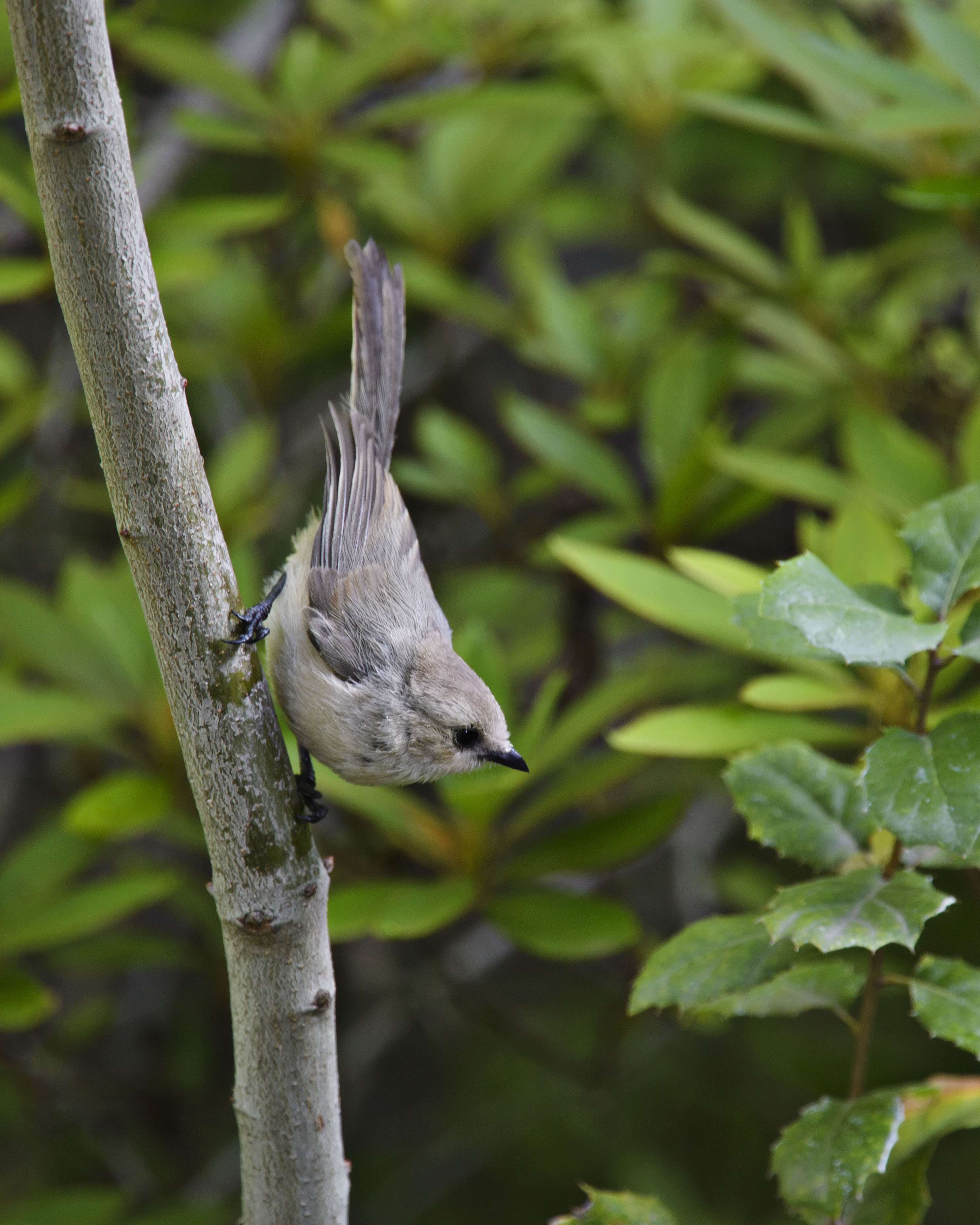
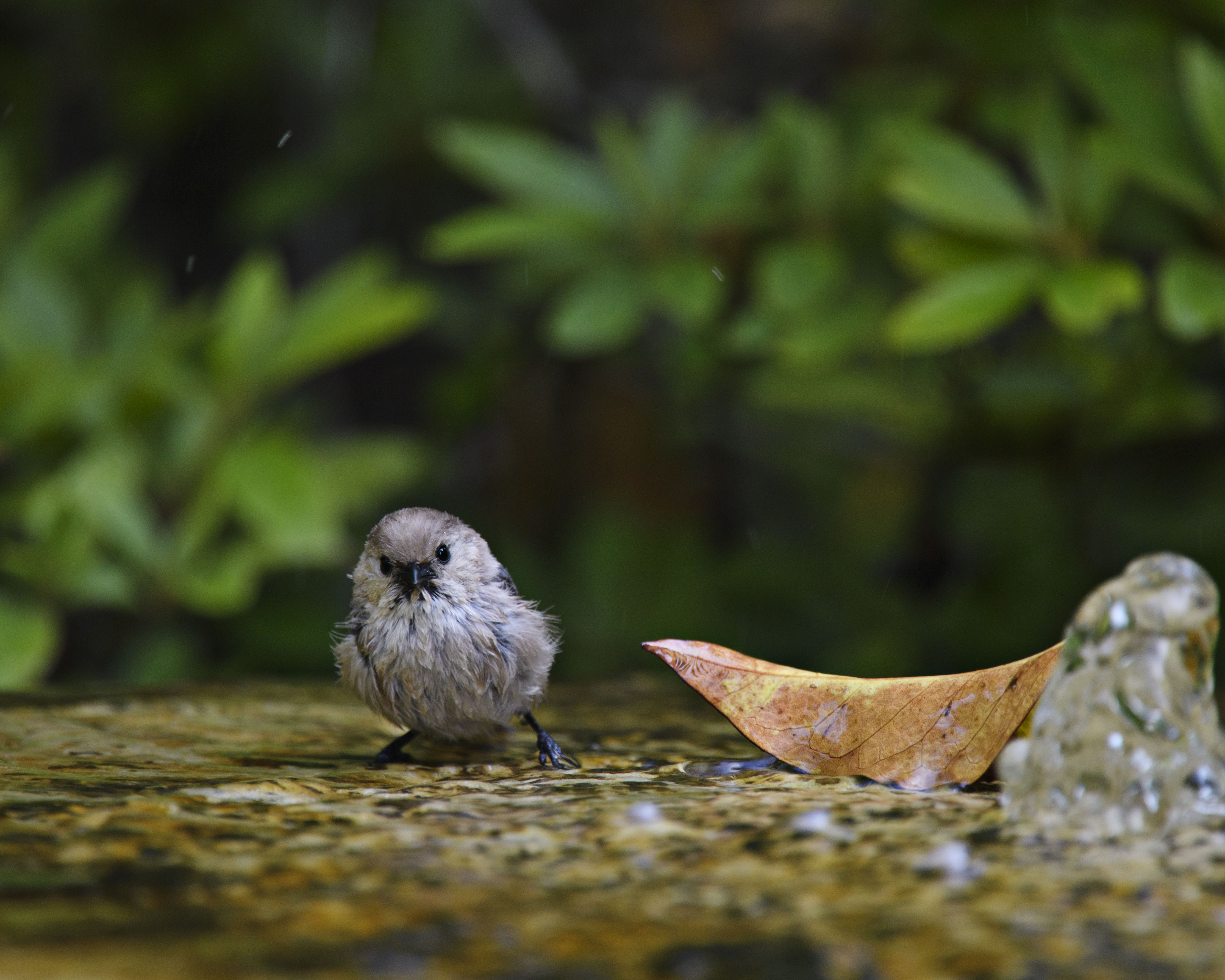
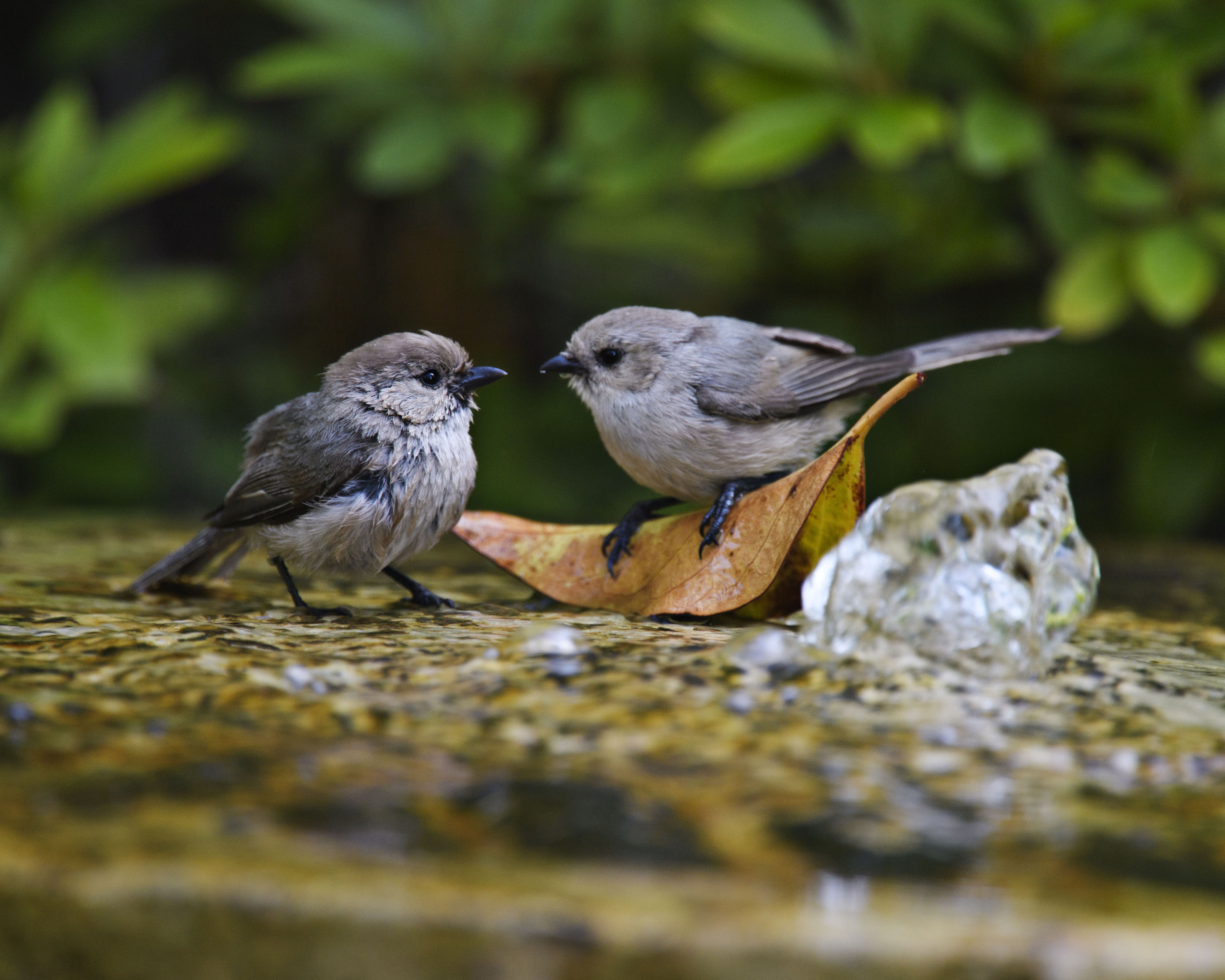
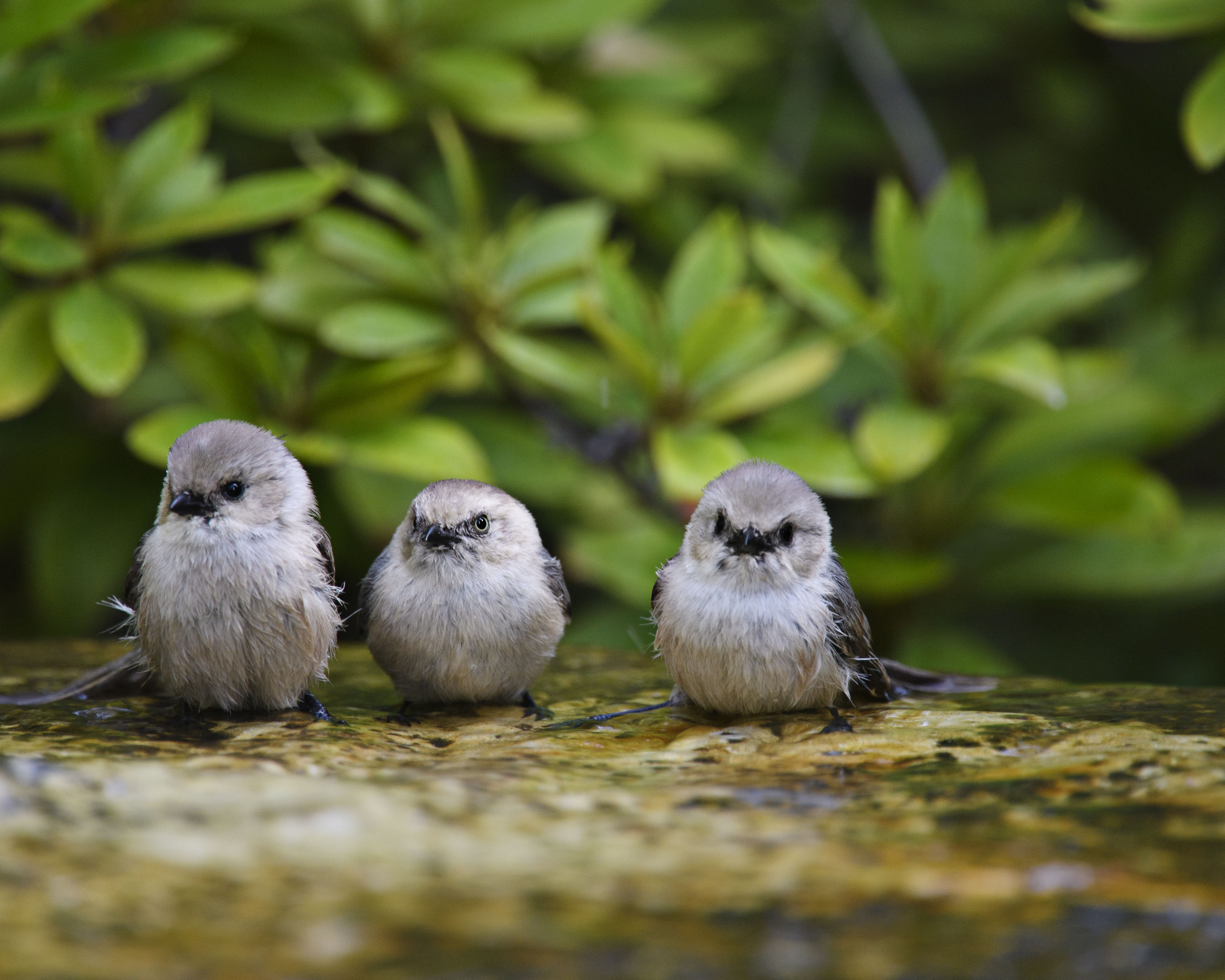
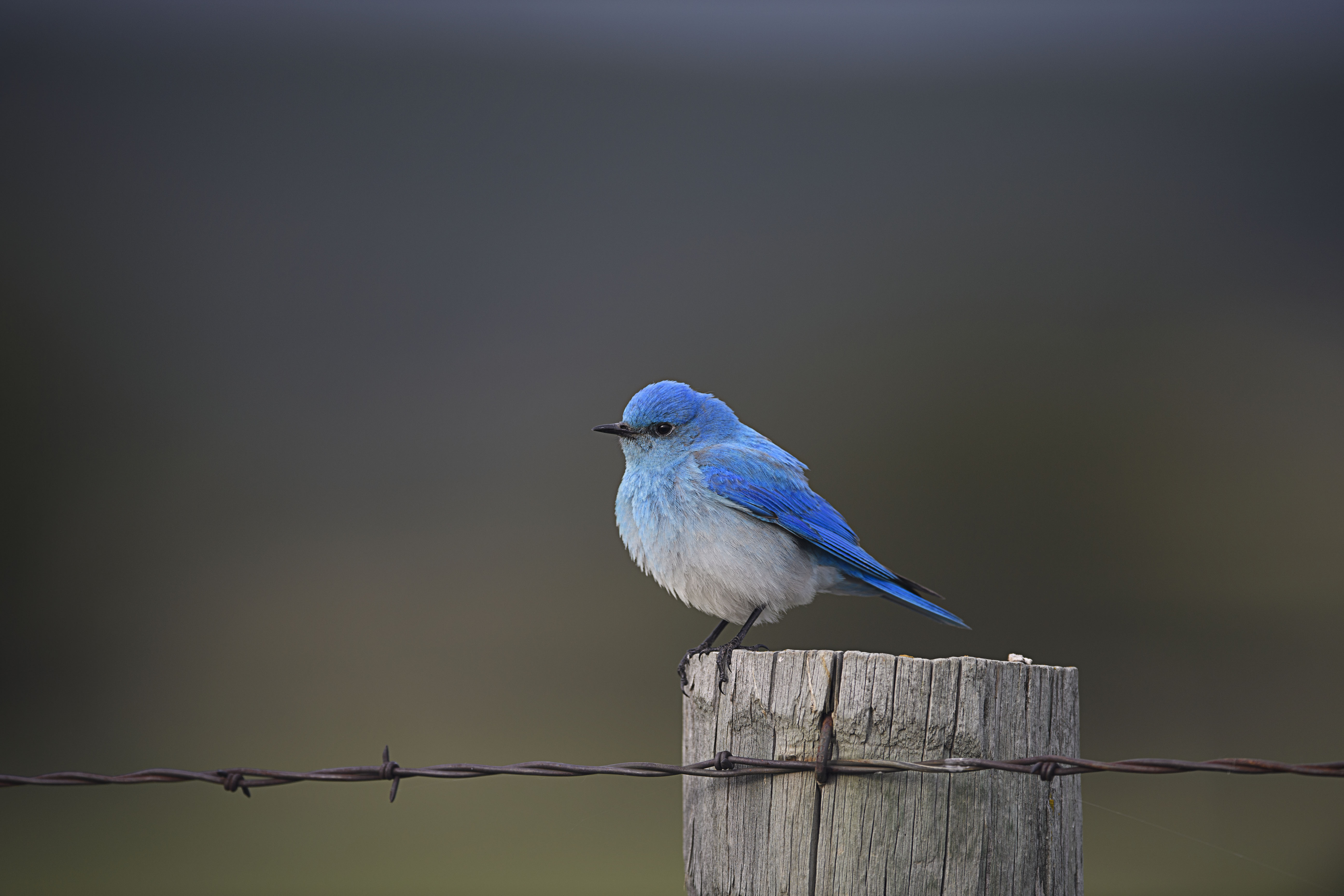
Pronghorns in Custer State Park have ready-made scratching posts. Almost everywhere we went when we saw pronghorns on the prairie, there were usually one or two scratching against dried, rigid stalks of mullein (verbascum thapsus). Park personnel told me the common names for it are bunny ears or donkey ears and—prepare to visualize, or not—pioneer or cowboy toilet paper. That’s because the base of the plant, when leafed out, is known for its velvety soft large leaves. That is actually TMI, as far as I’m concerned. Fortunately, we saw only dried plants so there were no cowboys or pioneers crouching in the shadows near any of the plants, just the occasional pronghorn, with the satisfied look of a creature scratching away an itch.

We had lots of opportunities to photograph tree swallows, mountain bluebirds, western meadowlarks, and red winged black birds on the barbed wire and posts along the airport road in Custer State Park. There were bluebird nesting boxes affixed to the posts, some inhabited by bluebirds, others by tree swallows. The tree swallows were most active around the nest boxes while we were there. The male perches nearby, occasionally calling to his mate. The female checks out the nesting box.
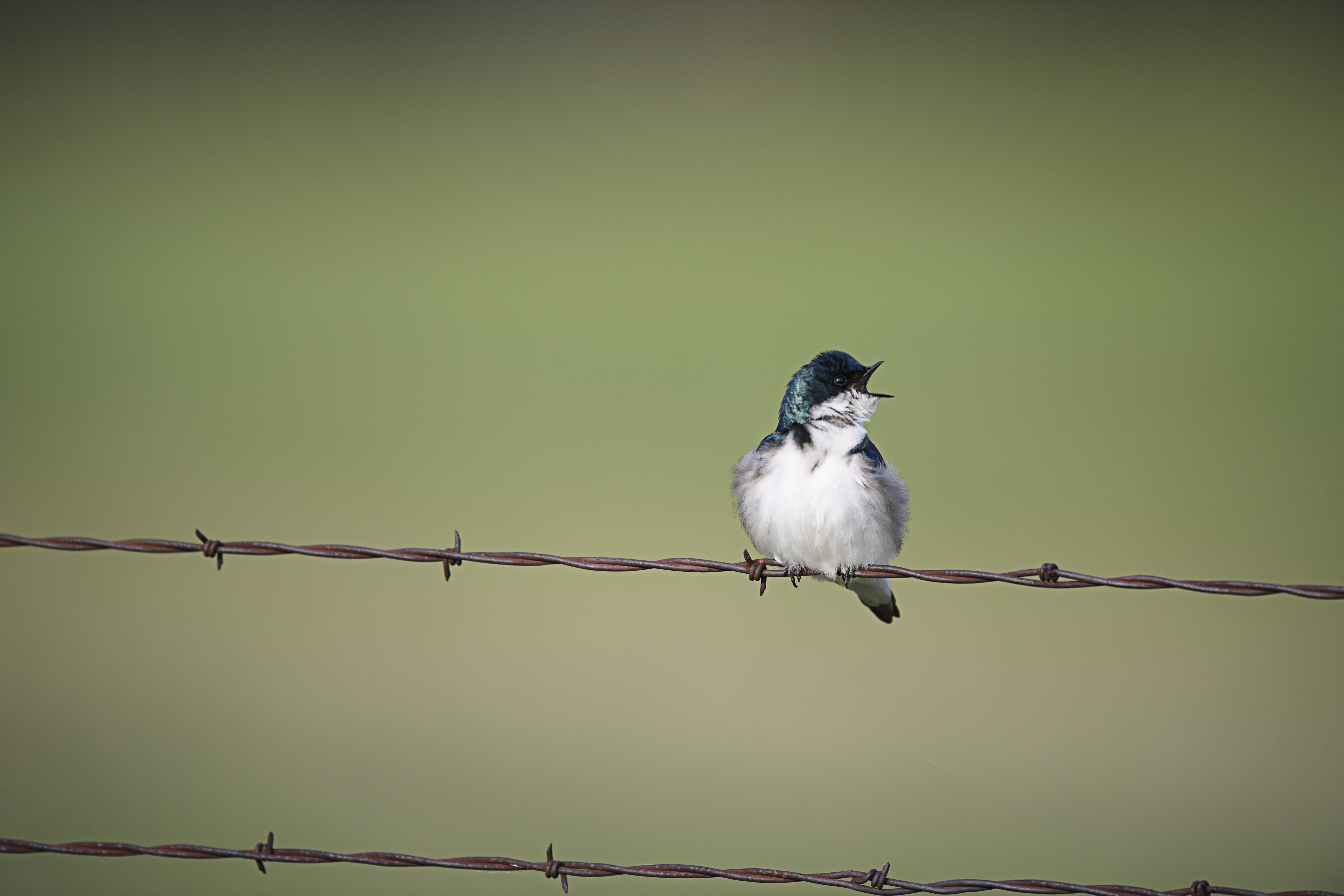

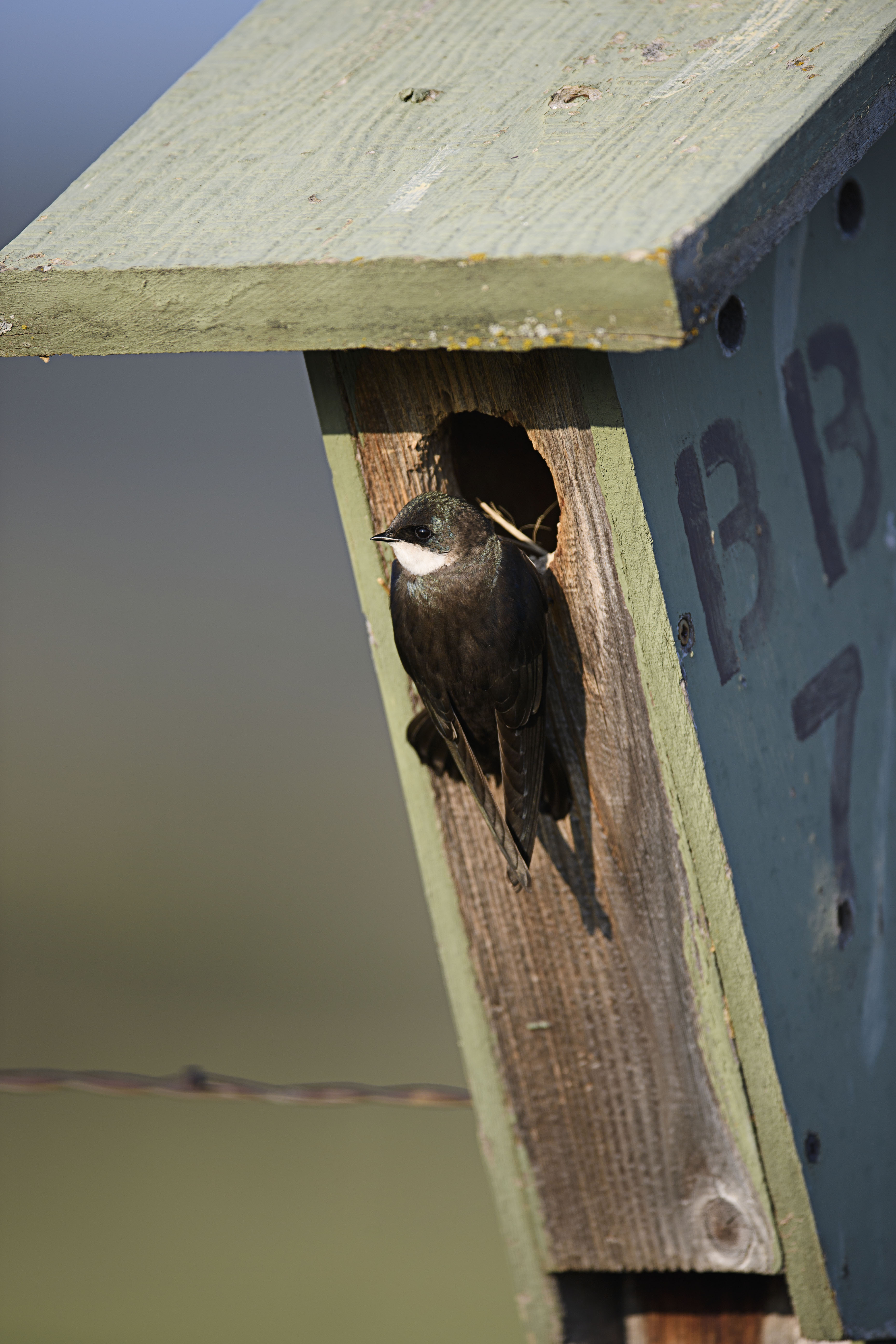
The bison has become the first national mammal of the United States. President Obama signed into law the National Bison Legacy Act, which designates the bison as our official mammal.
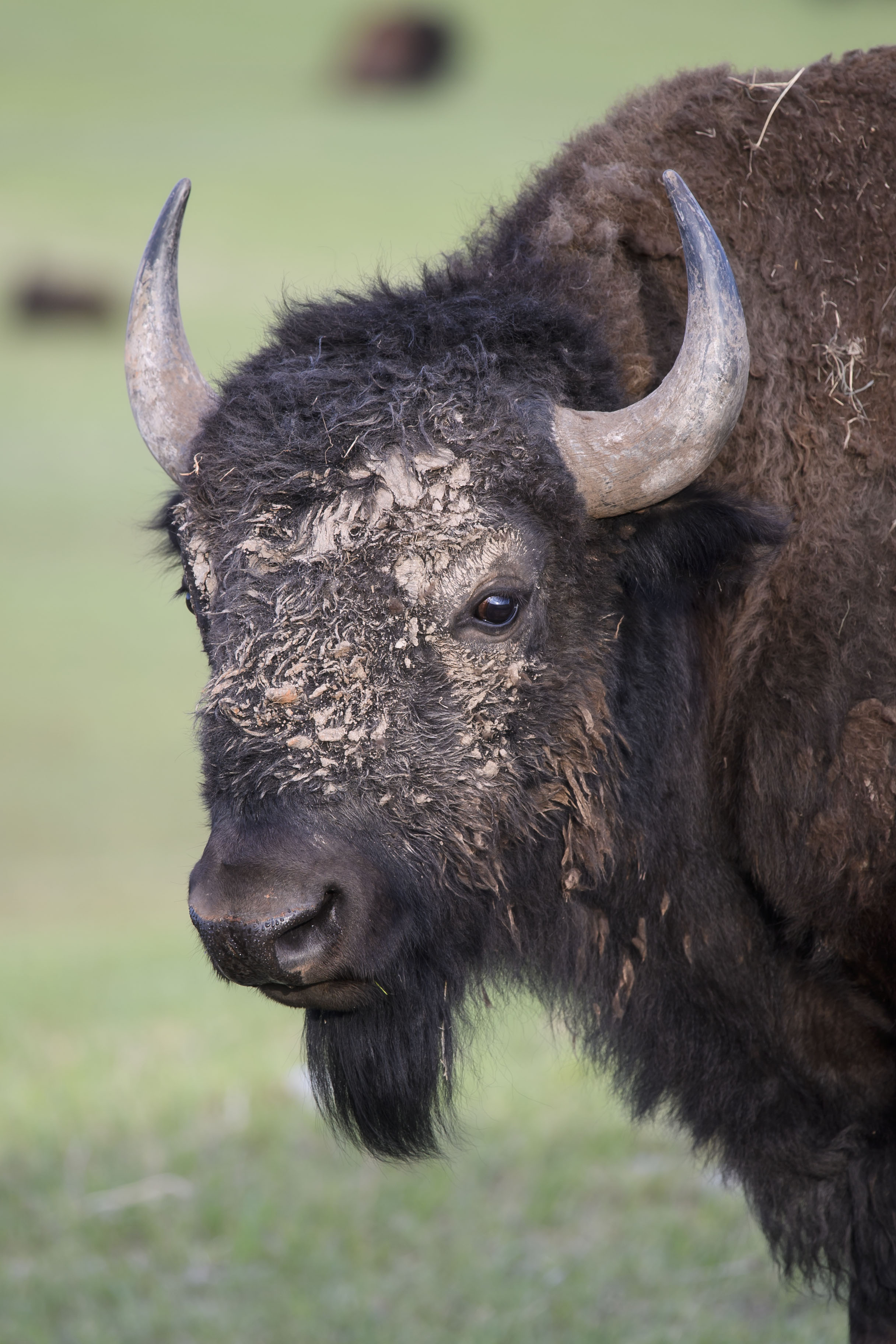



Most of the animals in South Dakota’s Custer State Park tolerate the vehicles that roll slowly by them as they graze. For the most part, the local fauna ignore the local tourists. Except for the begging burros. When a car stops in view of the small herd of burros, you’ve got to roll up your windows immediately or they will stick their heads inside. The burros were presumably abandoned by gold miners in the Black Hills and have established themselves as the beggars of the park. On a rainy morning, this burro raced down the hillside toward me; just as the burro reached my window, I got it closed. The burro went around the car to the other side hoping that someone would roll down a window and offer a treat. This is the only in focus shot I managed to capture of any of the begging burros.

The cutest babies in Custer State Park were the prairie dog pups. We watched a couple of Prairie Dog burrows for about an hour and a half one morning, paying the most attention to a large mound with an unusually large number of pups. We counted 8 pups but I managed to photograph only six at a time because they would dart in and out of the hole too quickly for me to react, even with my 12 FPS Nikon D5. This is one of my favorite shots featuring only half the brood.

Custer State Park is a quiet and serene place. This early in the season, before the tourists arrive, there is little traffic in the park and the absence of manmade sounds is very welcome. Any time of the day there, the most prominent sounds are usually bird calls: the lovely warbling of the Western Meadowlark; the lilting call of the Red-winged Black Bird; the melodic chirp of the Mountain Bluebird.

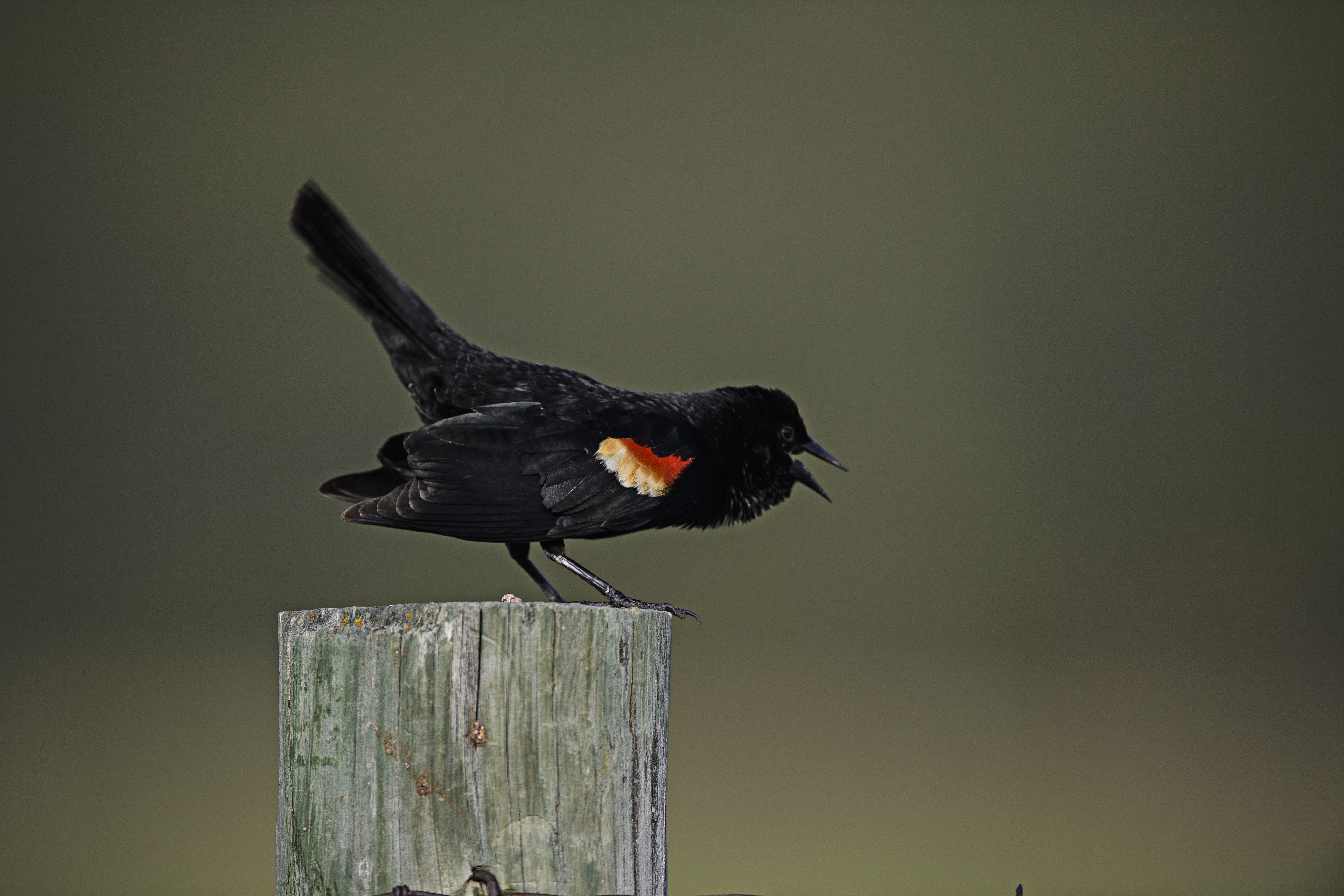
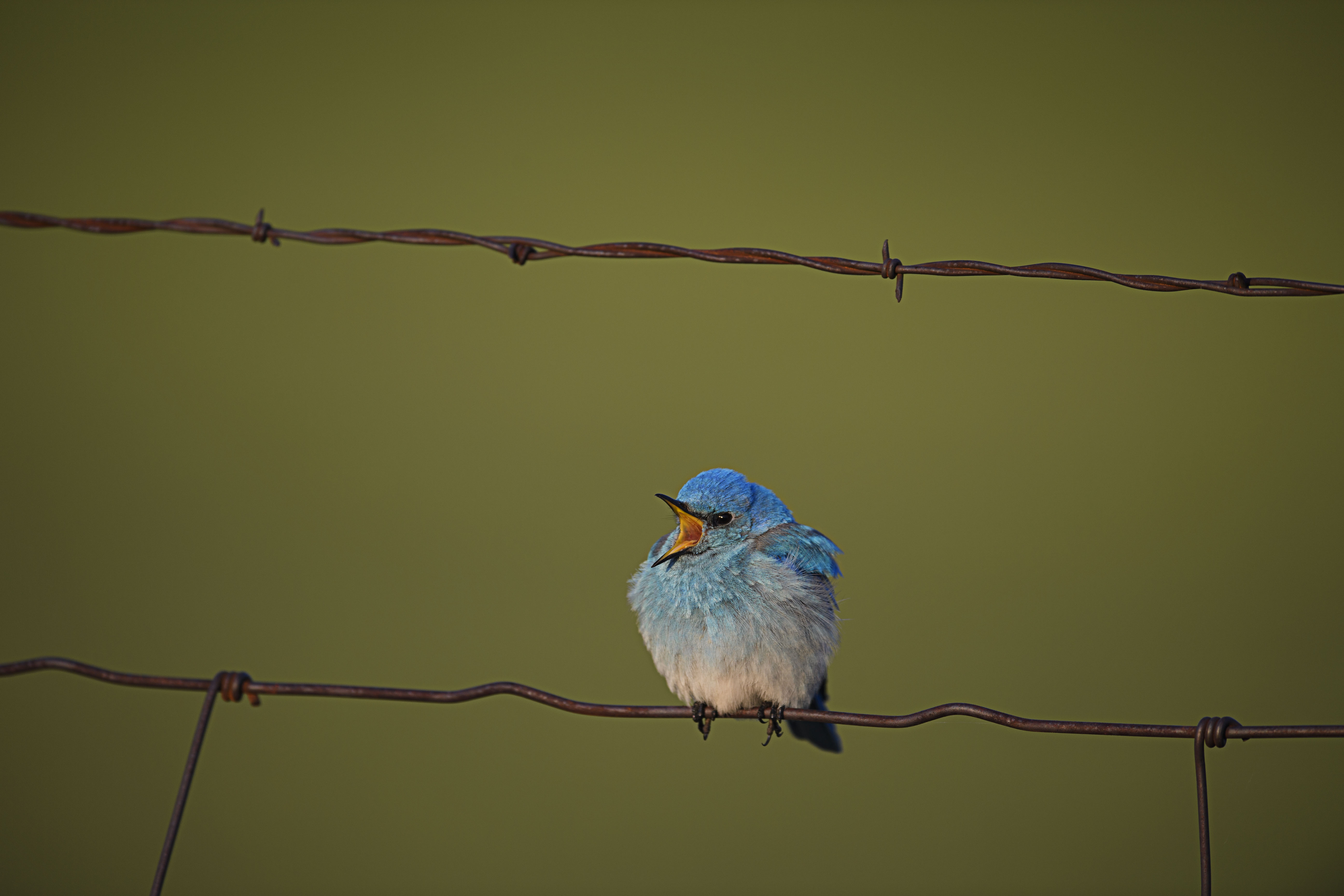
I shot the Tuesday morning sunrise in Custer State Park with my 300mm lens, a lens not normally used for landscape.

The cons at Folsom State Prison did good. My 1960s-era black personalized license plates for my 2016 Lincoln MKZ have finally arrived. The license plate on my 1969 Firebird, my first car, was one of the last in the series (the license plate number started with a Y). The old plates featured a black background with gold lettering. By 1970, all the plates issued in California were gold on a blue background. I’m not sure what year vanity plates debuted but the 1960’s black and gold vanity plates became available in 2015. When I bought my new Lincoln, I decided the newly reissued nostalgic plates would be perfect for the car. I chose N FOCUS for the plate, named after my blog. “In Focus” was not available.

Mt. Rushmore is just outside Custer State Park. I’d never been there and when Monday turned out to be rainy, foggy, and gloomy, Moose drove us there since most of the wildlife had retreated from the areas where we could view them. The presidents carved into the mountain (Washington, Jefferson, Teddy Roosevelt, and Lincoln) are four really big guys in more ways than one. Their noses measure about 20 feet. The second photo is a profile of George. We drove Iron Mountain Road that leads back to Custer State Park from Mt. Rushmore. The road has pigtails which loop in a curlicue around and over themselves and tunnels carved in the mountain that perfectly frame the sculpture. It is quite spectacular.



Monday morning we awoke to dense fog. Moose said it was the first time in thirty years of visiting South Dakota’s Custer State Park that he’d seen fog there. As we have done each morning, we left The Creekside Lodge, which is in the park, drove a quarter mile, pulled over, and set up our camera gear. We always ride with cameras in our laps, cameras on, prepared to photograph any wildlife we encounter. On this morning, we left at 6 AM, a bit later than usual because the foggy, overcast weather meant no sunrise to photograph. We were just a short distance up the road when we came across some female pronghorns in the morning fog. Pronghorns seem to tolerate automobiles near them so we were able to shoot relatively closely without exiting the vehicle, which is usually not recommended when wildlife is present.

This Mountain Bluebird was flying off the barbed wire fence to forage when I took this shot. His mate was in the nest box attached to a post a few feet to the right of this photograph. In the spring, Mountain Bluebirds are brilliantly colored and, unlike their eastern and western counterparts, they do not have a reddish breast.
I called this post “Bluebird of Happiness” not because the bluebird is happy but because I am happy to have managed to take this with my 600mm lens resting on a foam support on the window of the Ford Explorer Moose Peterson was driving in Custer State Park in the Black Hills of South Dakota. The vehicle was not moving, but it was only the second time I’d used the 600mm lens with a car, not a tripod, to support it. The first time was right after I got the lens many months ago. I was reminded that I needed to, and should have, practiced this technique prior to the trip along with several other long lens techniques of which I have only marginal grasp. The maneuver is awkward and tricky in the cramped front seat of a vehicle. The lens is rather a beast and with its lens hood attached, another 9 inches is added, making it difficult for me to achieve and maintain complete control of the camera and lens in the limited space. I obviously should have practiced, and not waited until I was here to try it out. Although I had a clear shot at my subject, I had to twist my body and adjust the height and angle of the lens to compose. After a few minutes trying to maintain the position, my entire body would begin to tremble so I couldn’t keep still and many photos were blurred because of it.
However, after some trial and error, I did manage to get quite a few decent shots of the bluebird and several other cooperative species of birds who landed on the posts or barbed wire of a fence that paralleled the roadway making shots from the vehicle theoretically easy.

On Friday the 13th, I flew from Sacramento to Rapid City, South Dakota via Dallas/Fort Worth. On the flight to Rapid City, I gave up my aisle seat so that a mother, daughter, and 3 week old granddaughter could sit together. It was a smaller airplane and my new seat was in a single row of seats on one side of the aisle giving me both an aisle and a window. I don’t normally have a window seat so I don’t normally get to see what I’m flying over. When I looked out, I saw a reddish brown ribbon snaking through the patchwork of farms. I didn’t realize at first that it was the Red River, which marks the border between Texas and Oklahoma. We crossed it more than once last week while we chased storms in Texas and Oklahoma. It’s quite apparent how the river got is name. In this shot, Texas is on the left, Oklahoma is on the right. Since all of my camera gear was stowed, the only camera at hand was my iPhone. My iPhone identified the location of the photograph, even though I took this at 36,000 feet, as Gainesville, Texas and, no surprise, this looks exactly like the Google map of this part of the Red River and the Texas/Oklahoma border, if you turn it 90°. The river runs east/west and I was flying north.
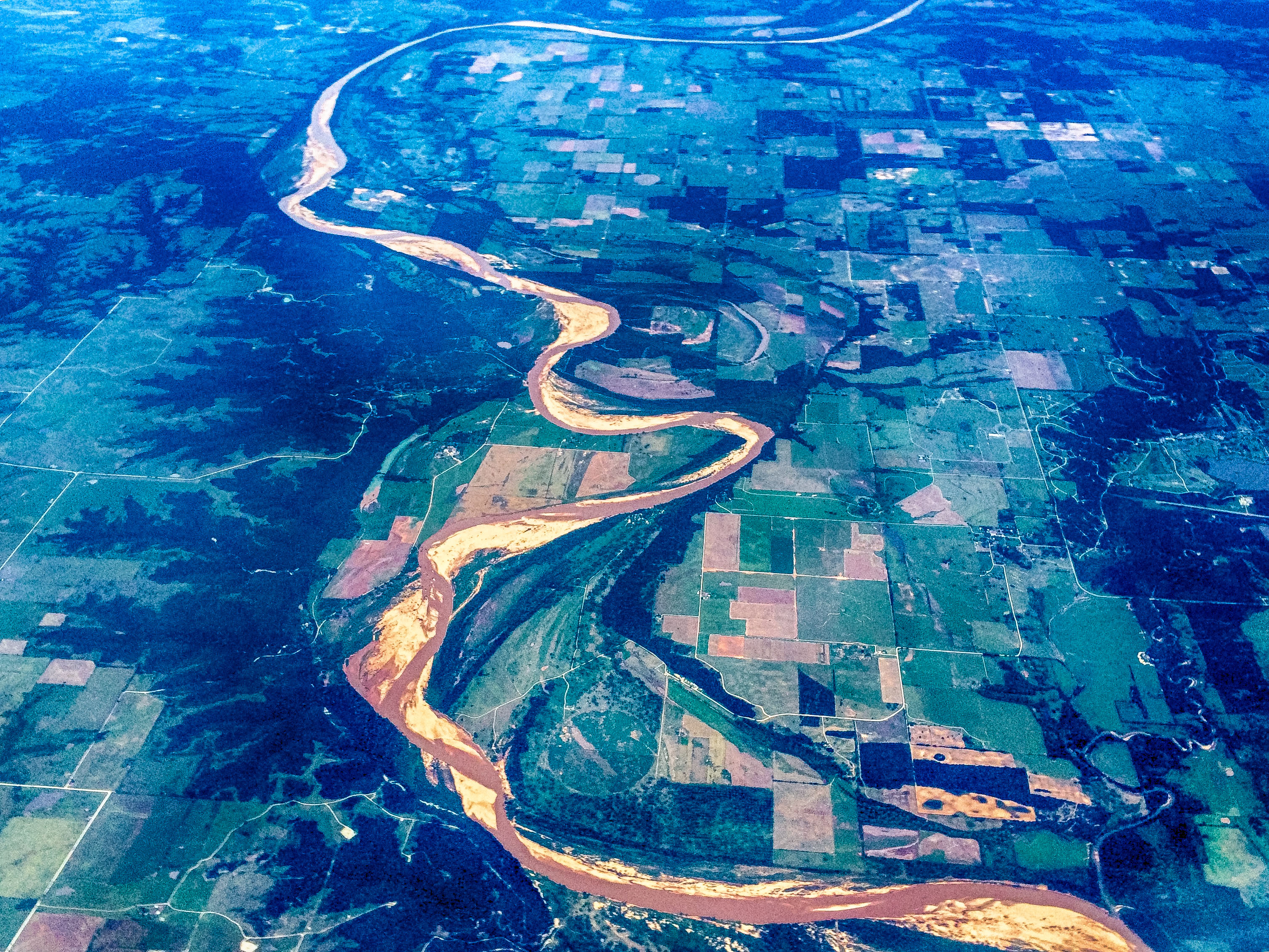
The god beams seem to lead straight to the custom fencing sign at the bottom of the frame. Must mean the fence will have the strength to withstand a tornado…which, by the way, never formed.

Late Wednesday afternoon I was drawn outside by the unmistakable squeakls of baby scrub jays demanding to be fed. There are at least two fledglings. Sadly, I found a third dead on the lawn under the nest on Friday morning and I worried that the jay family might have had just one chick but today I saw two healthy ones and there is possibly another. I love scrub jays. Most people hate them. They are loud and raucous and bully other birds in the yard who they deem a threat or just because jays tend to be bullies. But they are smart, they are gregarious, and their antics are fun to watch. Over the past 25 years scrub jay families have raised quite a few young in my yard and have bathed in my fountain and have entertained me. The photinea shrubs, where the fledglings were waiting to be fed, are dense and twiggy and provide good camouflage for the birds but terrible line for sight for a photographer. I tried pushing flexible branches aside and poked my head between others but the young were hard to see clearly. I photographed one of the parents as it waited nervously on the fence with an acorn it had dug up in its beak but because I was close, it didn’t fly to feed the young birds. Instead, it flew to another tree so I poked around and finally got one clear shot of one of the fledglings. I thought the last shot of this same bird was priceless with the little bird’s head poking up above the leaves, looking at me, and calling for food! The leaves are little distracting but I couldn’t get to them to push them aside.



As I sat on my patio to get some hummingbird or scrub jay “flight” practice Tuesday, I heard the unmistakable roar of one of the huge Coast Guard planes making a landing approach to nearby McClellan Park where the Sacramento USCG Air Station is based. I aimed my camera up and as the plane rumbled overhead I caught three frames, each with a shutter speed of 1/3200, fast enough to stop the propellers mid-spin but too fast to show the more desirable blur of the spinning propellers. The Coast Guard planes are usually painted white with red accents but this plane was silver. Curiosity got to me and a Google search revealed this plane to be an Alenia HC-27J Spartan aircraft that was transferred about a year ago to the Coast Guard from the US Air Force. I guess they’ll paint it eventually. Now that I’m home, and the Sacramento area weather has returned to its seasonal blandness, the clouds have dissipated and the skies are warm and blue.
For this photograph, I took one of my cloud photographs from last week and merged it with the plane photograph. Thanks to Moose Peterson, who last week encouraged me to look up at the clouds and take some shots instead of taking all of the shots of the landscape, I had several cloud formations that seemed appropriate as background for the airplane. I used one of the Nik Silver Efex Pro 2 filters to get this look. The shot isn’t cropped. I had the 300mm lens with the 1.4X teleconverter and the D5 set to High Speed Crop so the airplane filled the frame. I clipped the tip of the tail on all three shots so at least my panning was consistent, if not perfect.
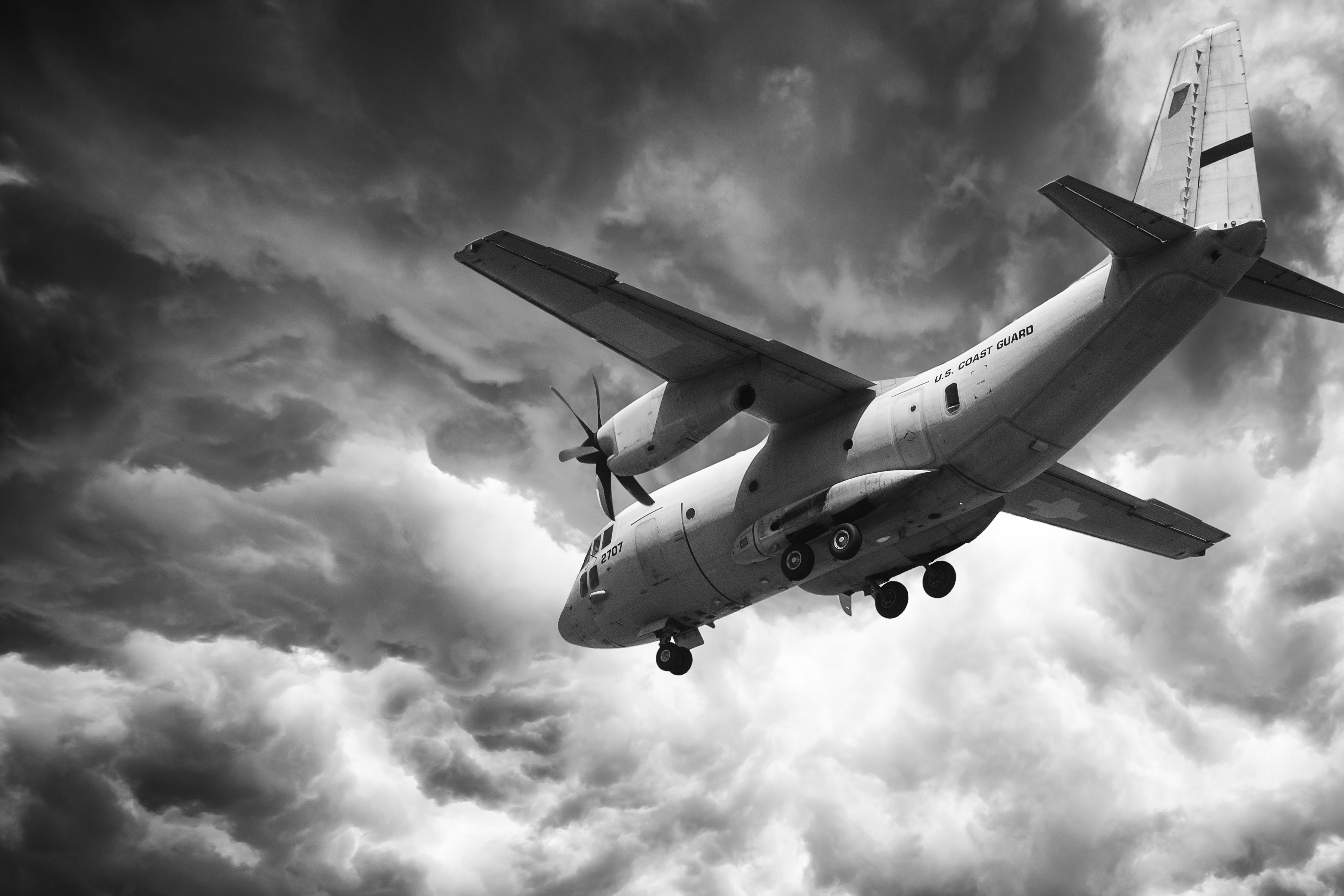
Apparently, I disappointed my nephew with today’s blog post (Munch) because he was not expecting a prairie dog but rather something to do with Edvard Munch, the expressionist painter whose painting, The Scream has always been one of my favorites since I first saw a print of it in a college art class, though I can’t really tell you why. It has a kind of raw, other worldly appeal to me, I guess. So, for those readers who were expecting Munch, as in the painter, not Munch as in “nibble, nibble” here is my nephew Michael’s version of Prairie Dog Munch (with apologies to the memory of Edvard Munch).
